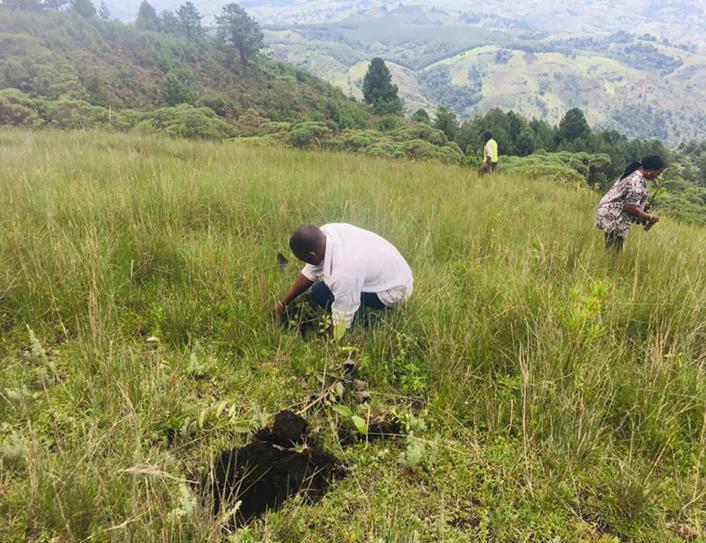Hudson Christopher Laizer
Other projects
21 Jan 2020
Restoration of Degraded Habitats of Mount Loleza Forest Reserve to Enhance Preservation of Ecosystem Services through Community Conservation Education
18 Apr 2023
Saving the Wild Pollinators from the Local Extinction: Promoting the Conservation of Beneficial Insects and Bird Species in Mbeya Range Forest Reserve
Mount Loleza Forest Reserve (MLFR) is among the ecological potential areas harboring bird population, while offering ecosystem services to local communities. The ecosystem services and resilience of MLFR is currently being threatened by anthropogenic habitat changes (AHCs) due to habitat fragmentation, forest resources dependence for livelihood, and lack of conservation education. AHCs occurring in the forest reserve and adjacent habitats threaten bird species, richness and diversity i.e. affect the birds population to reproduce, and may cause local extinction. Therefore, habitat restoration and reducing human negative impacts to the reserve is emphasized in order to protect the MLFR ecosystem, the services it offered and the bird species it hosts.

The Mount Loleza Forest Reserve (MLFR) is located 08°51′18″S and 033°25′15″E in Mbeya region, southern highlands of Tanzania. The peak of the mountain is 2656 meters above the sea level. MLFR offers ecosystem services that support the wellbeing of the communities around. It also harbours diverse of flora and fauna. Despite its importance in supporting the biodiversity, anthropogenic activities have negatively affected the MLFR ecosystem. Most of the effects are due to over dependence on the forest resources for livelihood, illegal activities and lack of conservation education among some communities. These anthropogenic activities pose the highest threat to species richness and diversity especially birds which may results to local and global extinction at large. The current management and conservation efforts in the MLFR are not showing promising results, hence conservation education should be emphasized among local communities in the surrounding areas.
Thus, this study aims to assess anthropogenic changes threatening the ecosystem health, services and birds’ population (i.e. abundance, diversity and species of birds) in MLFR; to raise environment conservation awareness and empowerment to local people bordering the MLFR through initiation of income generating activities such as establishment of beekeeping projects and tree nurseries; and to conduct restoration activities in MLFR and degraded border zone areas.
The income generating activities will improve communities’ livelihood and reduce pressure on the dependence of natural resources from the MLFR. Thus, in the end human driven negative impacts to the reserve will be reduced or halt completely, the MLFR ecosystem will be conserved and bird species population will be rescued from local extinction.